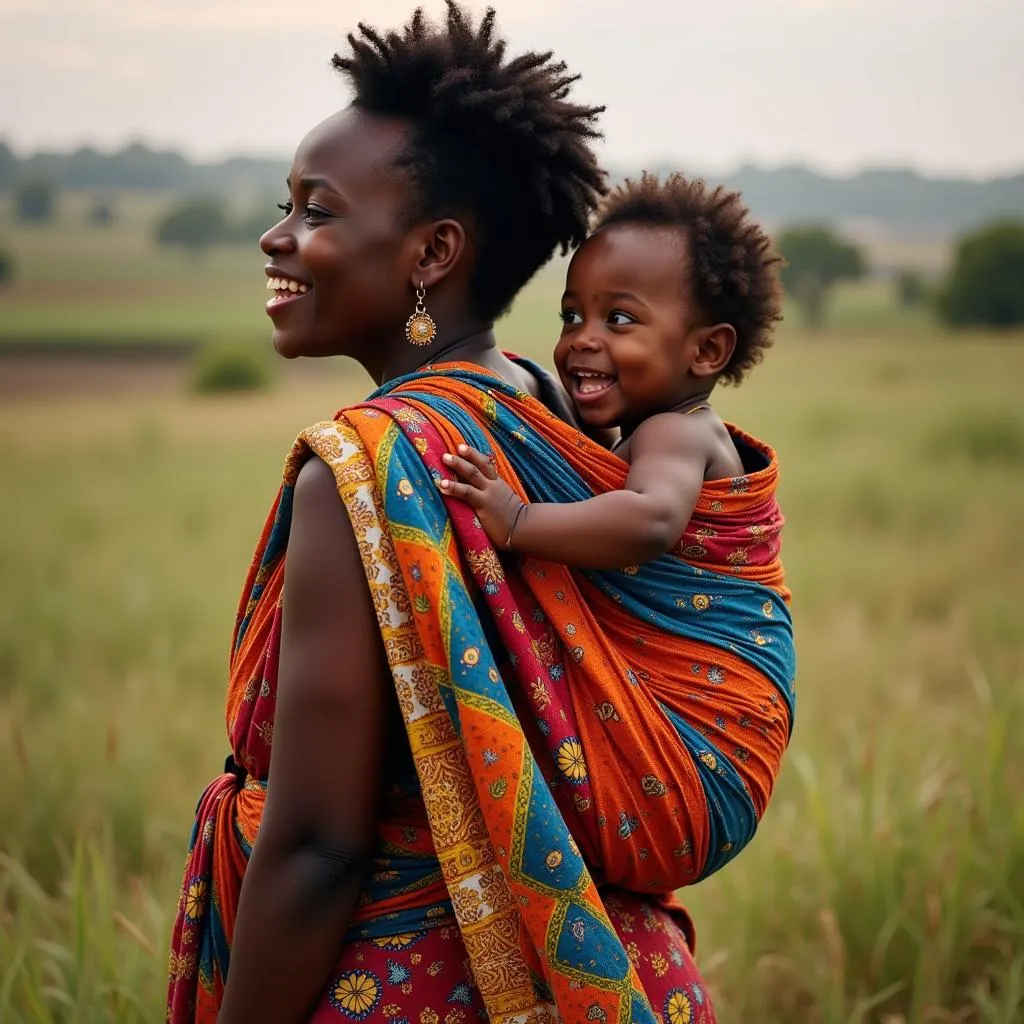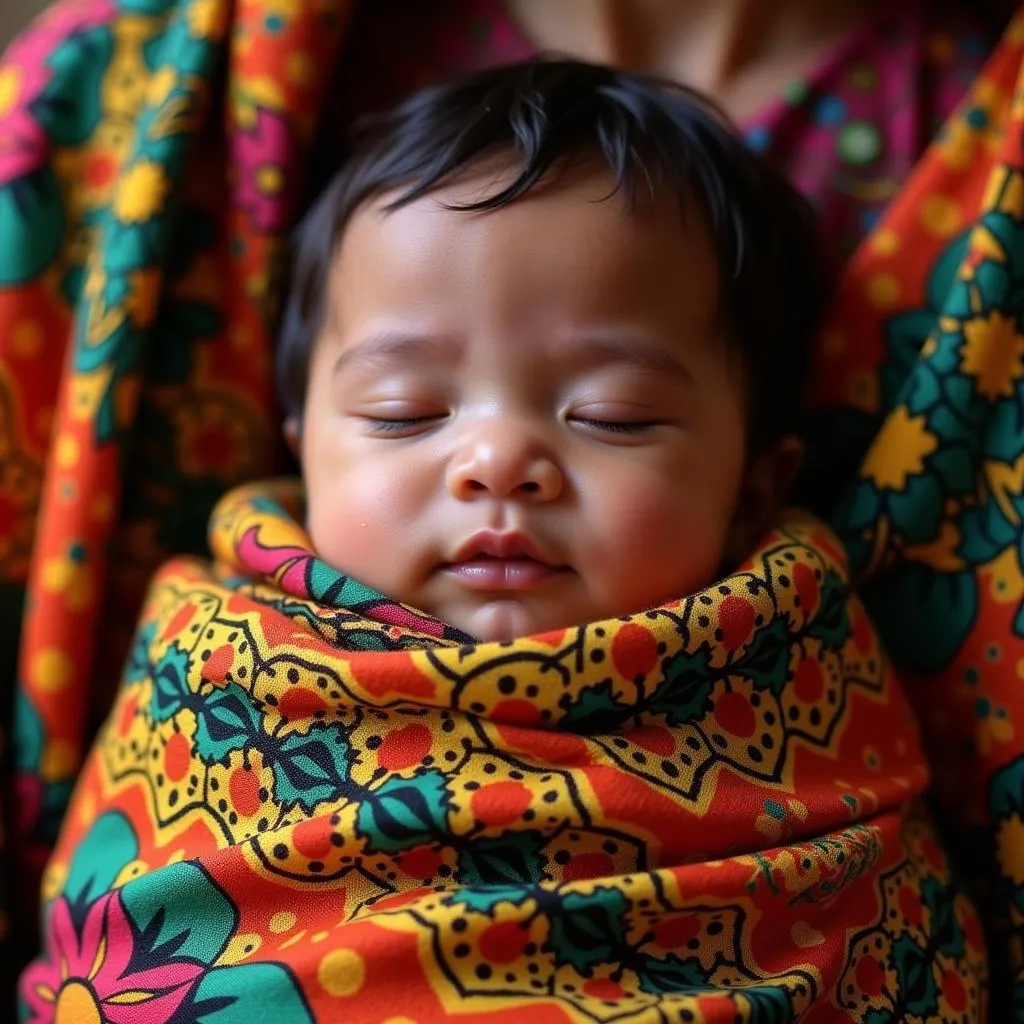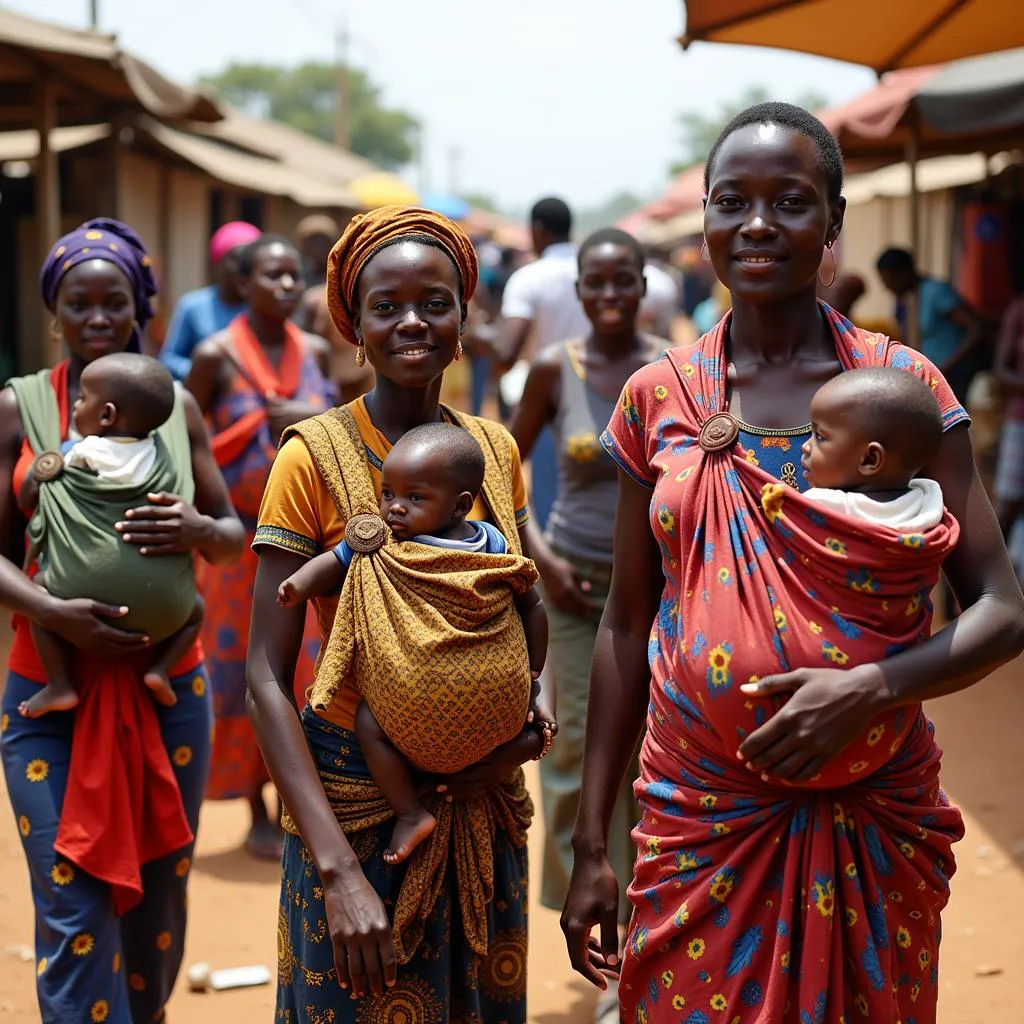African Baby Wearing: A Timeless Tradition of Love and Practicality
African baby wearing, the practice of carrying infants close to the body using wraps or carriers, is an age-old tradition deeply woven into the fabric of many African cultures. More than just a practical necessity, it’s a beautiful expression of love, care, and a profound understanding of a child’s needs.
 African mother baby wearing with a smile
African mother baby wearing with a smile
A Legacy Passed Down Through Generations
For centuries, African mothers have embraced baby wearing as an integral part of their daily lives. This time-honored tradition is often passed down through generations, with mothers, grandmothers, and aunts sharing their wisdom and techniques for securely and comfortably carrying their little ones.
Baby wearing offers a multitude of benefits for both the baby and the caregiver. Let’s delve deeper into the fascinating world of African baby wearing and explore the reasons behind its enduring popularity.
The Benefits of African Baby Wearing: A Closer Look
1. Fostering a Deep Bond and Secure Attachment
Close physical contact is crucial for a baby’s emotional and psychological development. Baby wearing enables continuous skin-to-skin contact, promoting a sense of security and fostering a deep bond between the caregiver and the infant. The baby is soothed by the caregiver’s familiar heartbeat, warmth, and gentle movements, creating a comforting and loving environment.
2. Promoting Physical Development and Comfort
The gentle rocking motion experienced during baby wearing can help soothe a fussy baby and even alleviate colic symptoms. Furthermore, being carried upright can improve digestion and reduce instances of reflux.
 African baby sleeping soundly in a wrap
African baby sleeping soundly in a wrap
3. Enhancing Sensory Stimulation and Learning
Unlike being confined to a stroller, baby wearing exposes infants to a world of sensory experiences. From the vibrant colors and patterns of the wrap to the diverse sights and sounds of their surroundings, babies’ senses are stimulated, fostering cognitive development and curiosity.
4. Facilitating Everyday Tasks and Mobility
In many African communities, baby wearing is an essential part of daily life, allowing caregivers to tend to household chores, work in the fields, or navigate crowded marketplaces with ease. The baby is kept safe and secure while the caregiver maintains their mobility and independence.
The Art of African Baby Wearing: Wraps and Carriers
African baby wearing is as diverse as the continent itself, with various regions boasting unique wrapping techniques and carriers. Let’s explore some of the most common methods:
-
Kanga (East Africa): A large rectangular piece of fabric, often brightly colored and adorned with patterns or proverbs, wrapped around the mother’s torso to carry the baby on the back or hip.
-
Chitenge (Southern Africa): Similar to the Kanga, but often made of a lighter fabric and used to carry the baby on the back.
-
Pagne (West Africa): A long, rectangular cloth, expertly tied around the waist and draped over the shoulder to create a secure pouch for the baby.
-
Ngolo (Central Africa): A long strip of fabric, typically made from bark cloth, used to securely tie the baby to the caregiver’s back, often with the baby’s legs comfortably straddling the wearer’s hips.
These are just a few examples of the many ways African cultures have mastered the art of baby wearing, combining practicality with a sense of cultural identity and beauty.
 Group of African women baby wearing at a market
Group of African women baby wearing at a market
Conclusion: A Legacy of Love, Carried Close
African baby wearing is more than just a practical solution; it’s a profound expression of love, care, and tradition. It strengthens the bond between caregiver and child, promotes healthy development, and enables caregivers to navigate their daily lives with ease and confidence. This timeless tradition serves as a testament to the deep wisdom and cultural richness of Africa, reminding us of the power of human connection and the beauty of carrying our littlest ones close to our hearts.

